
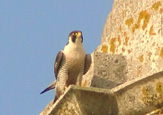
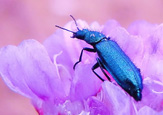
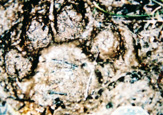
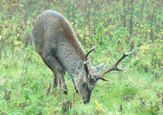
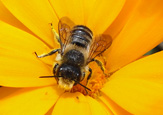
The Bournemouth Natural Science Society Zoology Department
Lectures
I took on the role of being the Bournemouth Natural Science Society zoology section chairman in 2000. Since then I have had speakers on a range of subjects, covering all the phyla. Amphibians, reptiles, fish and small invertebrates, through to mammals. Speakers range from students to professionals.
These days I tend to do the lectures myself and incorporate my knowledge and photography. I lecture on all manner of zoological subjects, reptiles and mammals being my speciality. Within these subjects, I have been unofficially studying and photographing Bournemouth's cliff top lizards for seven years. I also talk about the local heathland reptiles.
I love deer and regularly talk about the many species we have locally and about their predators, the non-indigenous big cats that have become naturalised. This topic is extremely interesting and gains a lot of outside interest. I have been studying the phenomenon for many years and collected a lot of data and field evidence, including having made many sightings personally. I am involved in various groups regarding big cats and I do a lot of research locally and otherwise. I consult on the subject and am involved in TV and other media coverage, as well as in books and magazines.
Field Meetings
I prefer autumn and winter, or dusk during summer time. Autumn is when deer rut, so we visit Purbeck or the New Forest to watch sika, fallow or red deer rutting. Roe rut at the end of July and during August.
Searches for big cat field signs are common especially in the winter months and we never fail turn up something of interest within my study areas. Walks to look for reptiles in early summer may be earlier than the usual 10.30, as reptiles emerge early on warm days and disperse as it gets warmer. Evening meetings include watching badgers, deer, bats, spiders and holding cat watch vigils. Spider hunts are in the early autumn: we have many fascinating and rare or local species especially on our heathlands.
I do tend to take people on obstacle courses, so the right clothing is essential not just because of wear and tear, but also with regard to minimising disturbance to the wild life. Dark waterproof quiet garments are very important: not rustling white jackets for example! Foot wear must also be appropriate. If you always wear wellies, then you can't go wrong. I do not walk far, and some of the time may require silence and immobility.
I advise people to telephone me the evening before so I know who to expect. Numbers of attendees may be reduced in sensitive areas.
Museum
There are many zoological exhibits in the building. Excluding birds and insects, there is a diorama containing various preserved mounted animal skins. Most of these were local animals found by myself as road traffic accidents and, as I am a taxidermist, preserved by myself. The specimens are not top quality at the moment due for example to fur fading from the light source from the ceiling. In due time animals will be replaced by better quality specimens.
Many mammal skulls adorn the shelves on the first floor. Some are awe-inspiring, such as the big cats and other oddities. Most British mammals are exhibited at some stage. We also have some interesting non-native species such as the duck-billed platypus. Many specimens are preserved in formaldehyde and are displayed on open days or can be taken out of hiding if requested.
On open days, I usually do a display of my big cat research. Click here to see my display for the Bournemouth Natural Science Society Open Day.